
_______________________
_______________________
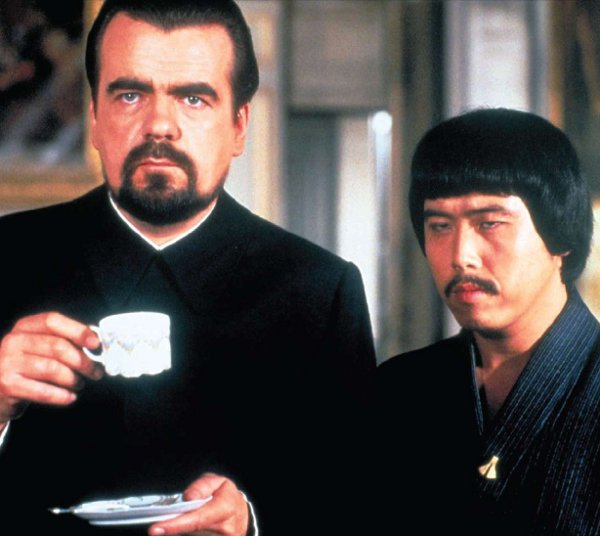
Evil Hugo Drax with manservant Chang in Moonraker. Although French, Drax did so enjoy taking afternoon tea in his château.
BOND ON VILLAINS
They’re a jolly bunch of people, all loved by their mothers and all with a sick plan to take over the world or dominate it in one form or another. From the feared head and members of SPECTRE to international drug barons, deadly assassins, warped idealists and terrorists … from the sublime to the ridiculous and back. They are all Bond villains.
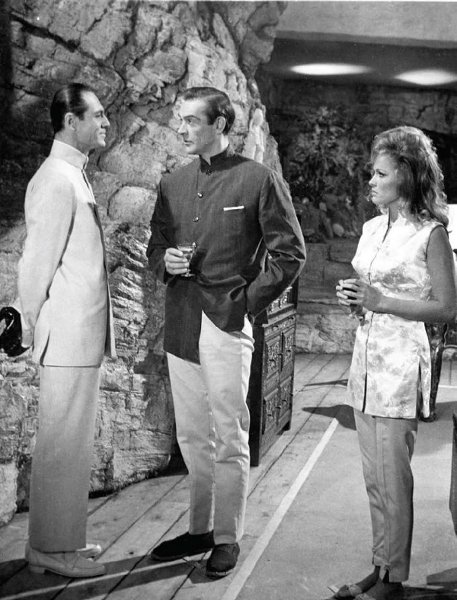
It all started with Dr. No, as played by Joseph Wiseman. I wouldn’t advise you to shake hands with him, as he has cold hands and a cold heart.
In truth, I always wanted to play a Bond villain as they invariably have the best dialogue – describing their complex, evil and very sinister schemes to do away with Jimmy Bond – whereas 007 just walks around saying his name and ordering Martinis. The villains aren’t on set every day, either, which means I’d have had a few days off here and there!
THE SPECTRE OF EVIL
In several of the books and early films it is the aforementioned SPECTRE – the SPecial Executive for Counter-intelligence, Terrorism, Revenge and Extortion – with which Jimmy is most concerned. Its evil head, Ernst Stavro Blofeld, is not aligned to any nation or political ideology, aside from his own unhinged ones.
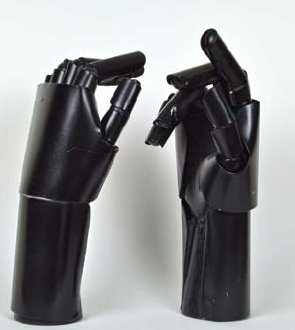
Get a grip, man! Dr. No’s metal hands couldn’t do much to save his slippery descent into hell.
SPECTRE arose from the need to create a politically neutral enemy for Bond. In 1959, with the Cold War at its height, Ian Fleming, Jack Whittingham and Kevin McClory were writing a screenplay on which the novel Thunderball was later based. However, Fleming thought that the Cold War could end in the two years it would take to produce the film, which would make the film feel like ‘old news’ even before release. So they decided instead to create SPECTRE, the dastardly twenty-one members of which are drawn from six of the world’s greatest criminal organizations – the Gestapo, the Russian counter-intelligence agency SMERSH, President Tito’s legendary secret police, the Mafia, Corsican hoodlums from the Unione Corse, and a Turkish drug-smuggling operation.
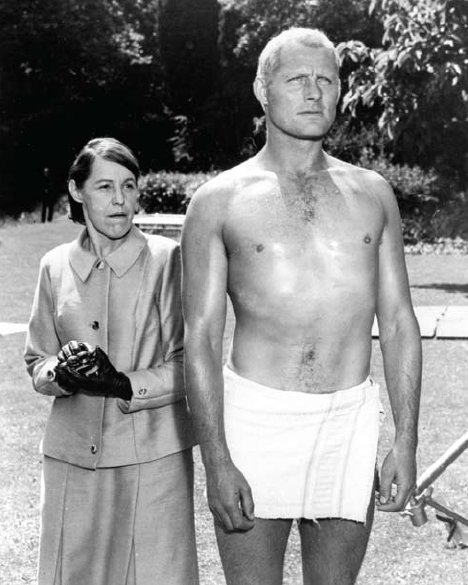
Lotte Lenya (Rosa Klebb) and Robert Shaw (Red Grant) in the Pinewood gardens, which you can see out of my office window.
SPECTRE’s main aim is to spark conflict between the superpowers – the Soviet Union and the United States – in the hope that this conflict will make them vulnerable enough for SPECTRE to snatch their power. In From Russia With Love, Blofeld likens SPECTRE’s modus operandi to the three Siamese fighting fish he keeps in an aquarium, noting how one fish refrains from attacking the other two until their fight is first concluded. Then, the waiting fish attacks the weakened victor and kills it much more easily.
But it was not all plain sailing for SPECTRE, as it and its characters became the centre of long and bitter litigation between Kevin McClory and Ian Fleming. When plans were abandoned to film the story written by Fleming, McClory and Whittingham, Fleming later published it as the novel Thunderball. A court case ensued and, in 1963, Fleming settled out of court with McClory. However, McClory secured the film rights to Thunderball, although literary rights remained with Fleming.
After the 1963 settlement, Eon Productions made a separate agreement with McClory to adapt Thunderball into the fourth official James Bond film, while stipulating that McClory would not be allowed to make further adaptations for at least ten years – perhaps thinking that by then 007 would have run out of steam? After several failed attempts to re-make Thunderball, in 1983 McClory finally succeeded to produce Never Say Never Again.
Never one to leave the stage quietly, McClory later contested the filmic ownership of James Bond himself, and threatened to make other 007 films based on earlier script ideas he’d penned. After another court case, in 2001 the UK courts awarded Eon Productions the exclusive film rights to the character James Bond. However, until his death in 2006, McClory continued to claim that SPECTRE and its evil head were his inventions – even launching a legal action when he heard that Karl Stromberg was to be a member of SPECTRE in The Spy Who Loved Me. The use of the organization was avoided by Eon from then on.
THE CHANGING FACE OF BLOFELD
Super-villain Blofeld first featured on screen – albeit not in camera shot – in From Russia With Love, although identified by name only in the closing credits of the film. Anthony Dawson supplied his body, Eric Pohlmann his voice. The gimmick was repeated in Thunderball but when You Only Live Twice commenced filming, Jim was to meet Blofeld in person. At last, we were going to see him!
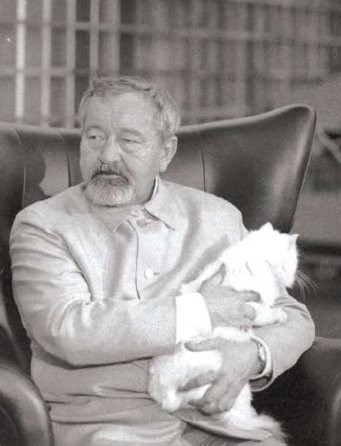
Jan Werich filmed only a few scenes as Blofeld in You Only Live Twice before departing the production …
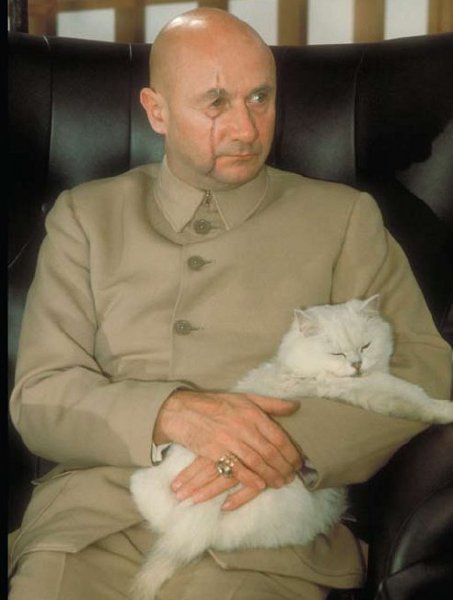
… in favour of the more menacing Donald Pleasence.
Czech actor Jan Werich was cast as SPECTRE’s ‘Number 1’ but both producer Cubby Broccoli and director Lewis Gilbert were anxious when he arrived at Pinewood at the start of the shoot, feeling that Werich resembled a ‘poor, benevolent Santa Claus’ rather than an arch villain. Lewis started filming but within a few days it became apparent that Werich simply wasn’t menacing enough. So they recast the role with Donald Pleasence.
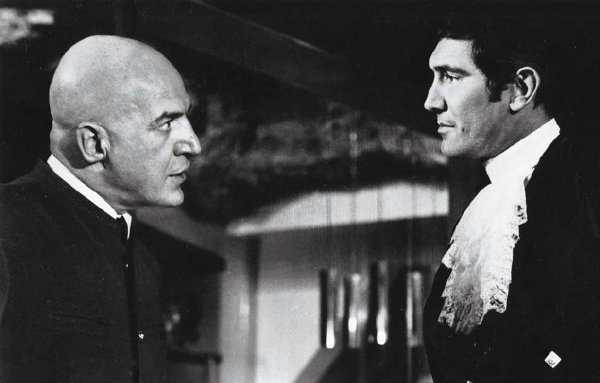
But in On Her Majesty’s Secret Service Blofeld had another look, and came in the shape of Telly Savalas.
‘They had already started work on the film,’ Donald Pleasence revealed, ‘and the Blofeld character was still open. They said they wanted me to read the script and create a character totally different to anything that had been done before, and I think we achieved that.’
He experimented for about a week at Pinewood with humps, lame hands and a beard – not all at once, mind you – before it was decided the now-distinctive scar would best convey the character’s almost Himmler-esque quality of villainy (and, as Donald played Himmler on film, that was a good analogy of mine, I reckon). Thus one of the screen’s most memorable villains was born.
On the swift re-casting, actor Burt Kwouk, who played SPECTRE’s ‘Number 3’ in the movie recalled, ‘One day we were filming with Werich in the control booth, and then the next day I turned around and there was a different actor sitting in Blofeld’s chair.’
Whoever was in Blofeld’s chair, one somewhat unexpected – and unfortunate – occurrence came as a result of all the explosions on set: Blofeld’s trademark white Persian cat didn’t take too well to them, and frequently relieved itself on its master!
Two years later, in On Her Majesty’s Secret Service, the feared head of SPECTRE returned in the guise of Telly Savalas. Given there was much more physicality involved in this movie – including skiing – director Peter Hunt didn’t feel the more diminutive Pleasence would be convincing as an athletic Blofeld. So he turned to Greek-born Savalas. Blofeld escapes – as he does in earlier films – but not before he and his sidekick Irma Bunt murder Bond’s new bride, Tracy. Understandably, Jim sets out on revenge and, in Diamonds Are Forever, tracks down his old nemesis – this time played by Charles Gray.
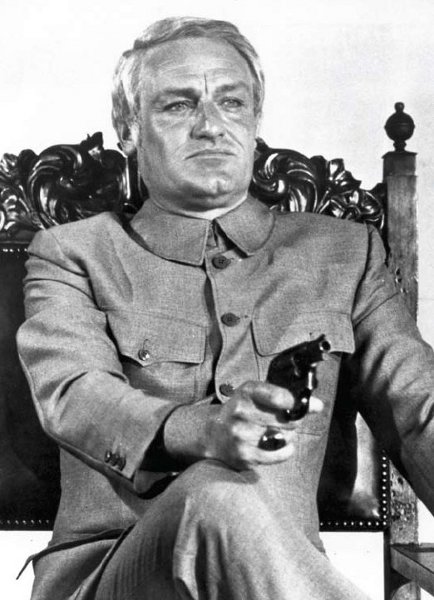
In Diamonds Are Forever, having undergone plastic surgery, Blofeld has yet another face – this one looking suspiciously like Charles Gray.
When George Lazenby was cast as 007, and thoughts were turned to introducing the different-looking character, Cubby had a dream about an opening scene where Jim comes out of a plastic-surgery operation. In the end, it was agreed they should just introduce a new actor and not really point it out, however, Cubby’s dream proved useful in explaining a different-looking Blofeld (and his doubles).
Charles Gray’s Blofeld was much lighter in style and tone – even appearing in drag at one point – which probably wouldn’t have suited Telly Savalas. Again, Blofeld eludes capture, but, thanks to the ongoing legal battle with Kevin McClory, doesn’t return to the series for a full ten years, and then isn’t actually referred to as Blofeld: John Hollis supplied his body and Robert Rietty his voice in the pre-title sequence of For Your Eyes Only. I ended up dropping him down an industrial chimney. Did he survive? Who knows?
SO MANY FOES
Aside from the esteemed Number 1, SPECTRE has offered up many foes to Jimbo. There was of course crazed genius Dr. Julius No, as played by Joseph Wiseman, and as with all great Bond villains he has a physical anomaly: in developing nuclear energy for no-good uses, he lost his hands and they were replaced by a metallic pair. The good doctor actually met his maker after being lowered into his own reactor coolant and, being unable to grip anything with his metal hands, it was good night Vienna.
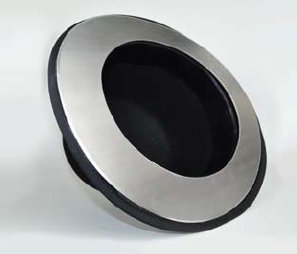
Oddjob’s custom-made steel-brimmed hat.
When casting ideas for Dr. No were first mooted, Ian Fleming suggested his friend Noël Coward to play the villainous doctor. A telegram was sent to the Master, which he answered with, ‘Dr. No? No! No! No!’ Harry Saltzman is said to have then chosen Wiseman because of his performance in a dark 1951 movie called Detective Story.
Ken Adam’s futuristic set of No’s base – and Ken’s sets are always a major contribution to the nutcase megalomaniac villain’s thoughts of superiority – featured a huge aquarium in the background of the dining room. It was described as being constructed from convex glass to give the impression of a ten-times magnification, making ‘minnows look like whales’. A classic touch was added on set when a reproduction of a Goya painting of the Duke of Wellington, which had actually been stolen in 1961, was placed on an easel next to the stairs; Bond stops to look as he passes it. Thankfully, the real portrait was recovered in 1965.
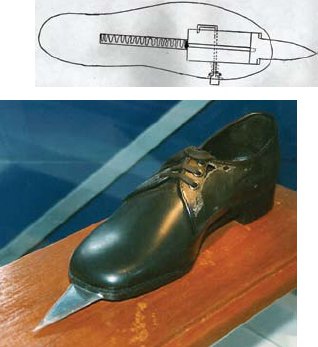
Rosa Klebb’s poison-tipped shoe and the design sketch by Pinewood effects engineer Bert Luxford.
Rosa Klebb, as played by Lotte Lenya, was also known as ‘Number 3’ in SPECTRE ranking. A thoroughly unpleasant lady with a penchant for peculiar shoes, in From Russia With Love we learn that Klebb secretly defected from SMERSH and used her former rank to deceive and recruit Tatiana Romanova, who in turn assisted the British in acquiring a Russian Lektor decoding device. By sending in Red Grant (Robert Shaw) to kill Bond, the Lektor would then fall into the hands of SPECTRE, or so she reckoned.
Grant is first introduced to audiences in the pre-title sequence – the premiere in the series – stalking a 007 lookalike around SPECTRE Island. It was inspired by the film L’année dernière à Marienbad, which had a lush garden setting, complete with eerie statues to stalk amongst. Director Terence Young dressed the gardens at Pinewood Studios and introduced a few false hedgerows to achieve a similar setting.
When Red Grant later gave himself away as an imposter to Bond on board the Orient Express by not knowing his wine, one of the classic Bond fights ensued. Set in the confines of a train carriage, although the fight took just a few minutes of screen time, it took weeks of rehearsal.
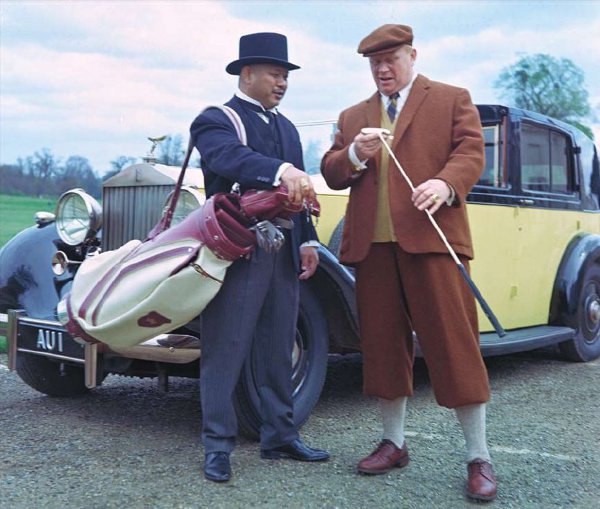
Goldfinger was the first villain to lend his name to a Bond film title. German-born Gert Fröbe played the titular character, and his Korean Man Friday (Oddjob) was played by Harold Sakata.
And then there was Auric Goldfinger as played by German actor Gert Fröbe. He wasn’t a member of SPECTRE, though I’m sure they’d have welcomed him. His plan was simple, and known as Operation Grandslam: amass huge wealth through gold bullion, and then increase its value tenfold by setting off a nuclear device inside the US gold depository, Fort Knox, rendering it untouchable.
Auric Goldfinger was named after Ian Fleming’s neighbour, Ernő Goldfinger, a rather eminent architect and furniture designer. It was said that some of his less endearing character traits were borrowed from him too. When the book was published in 1959, Ernő Goldfinger was unhappy and consulted his lawyers, prompting Fleming to suggest renaming the character ‘Goldprick’, but Goldfinger eventually settled out of court in return for his legal costs, six copies of the novel and an agreement that the character’s first name ‘Auric’ would always be used.
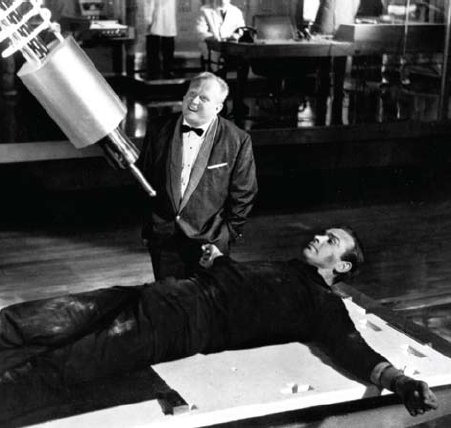
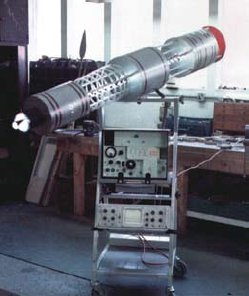
Goldfinger’s lethal laser, seen here on set and in the Pinewood workshop, was not really able to cut through metal. Its beam was added in to the film later, optically.
In both the novel and film, Goldfinger is aided in his crimes by his manservant, Oddjob, a mute, monstrously strong Korean who ruthlessly eliminates any threat to his employer’s affairs. Another notable feature was Oddjob’s rather unusual taste in headgear.
When Jim’s captured by Goldfinger, we really do fear for his life. He’s laid out, spread-eagled on a table, hands and feet secured, with a powerful laser rising between his legs.
Bond: ‘Do you expect me to talk?’
Goldfinger: ‘No, Mr Bond. I expect you to die.’
Ah, classic lines.
In fact, the laser beam was added optically later on and the cutting effect was achieved by F/X engineer Bert Luxford lying underneath the aforementioned table, on his back, with a blowtorch. He slowly cut up towards Sean’s groin – having only a chalked line to tell him where he should stop. Sean was, understandably, rather anxious.
LIP SYNCH
Gert Fröbe was cast after he impressed the producers and director Guy Hamilton as paedophile killer Schrott in the German/Swiss version of The Pledge. They asked his agent if he spoke English, and the reply came back, ‘Of course he does’. When Fröbe arrived at Pinewood to start shooting, he walked over to Guy Hamilton and said, ‘How do you do? I am very pleased to be here.’
Guy asked if his hotel was OK. ‘How do you do?’ Gert replied. ‘I am very pleased to be here.’ It soon became evident their lead villain spoke no English whatsoever!
Undaunted, Guy suggested they could dub him later, and asked Gert to speak the lines phonetically. In order to maintain a believable delivery pace, Guy asked him to speak very quickly rather than think about the words too much. In rushes the next day, the two producers couldn’t believe what they were seeing and hearing. It was total babble. Guy told them not to worry, and drafted in Michael Collins to provide the English voice, and his delivery matched the lip movement of Gert Fröbe brilliantly well.
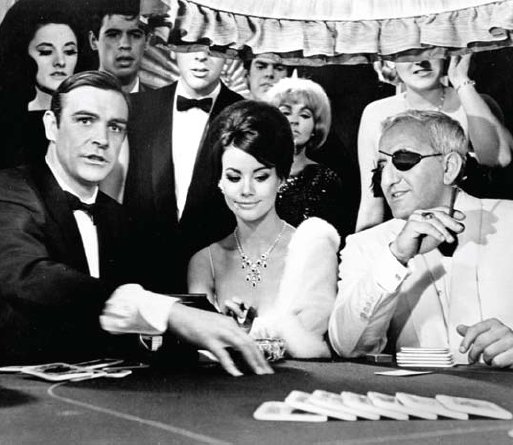
Emilio Largo (Adolfo Celi) was SPECTRE Number 2 in Thunderball. A nasty piece of work if ever there was one.
Emilio Largo was a force to be reckoned with as ‘Number 2’ in Thunderball. Italian actor Adolfo Celi played the villainous Largo, who used his talents well as head of extortion operations at SPECTRE. Fleming described Largo as a ‘ruthless Neapolitan black marketeer and fence who moved to riskier and more profitable ventures on the international crime scene’, and his black eye patch gave him a certain evil je ne sais quoi. Adolfo also had quite a strong accent and his voice was dubbed by Robert Reitty.
Blaxploitation movies were fast becoming popular in 1970s cinema, and screenwriter Tom Mankiewicz thought it would be very daring to use black villains in Live And Let Die, especially with the Black Panthers and other racial movements being very active. The ‘swinging sixties’ had romanticized the use of soft drugs, but in the early 1970s it was taken a step further by drug barons and counterculture. This all combined for an exciting plot in which Jimmy Bond tackled the drug barons head on, or at least Harlem drug lord Mr Big, whose plan was to distribute the world’s largest cache of heroin, free of charge, on the open market. It would drive other drug cartels out of business, increase the number of addicts, and give Mr Big and his alter ego, poppy-farming Dr Kananga, a monopoly.
As director Guy Hamilton was a jazz fan, he suggested filming in New Orleans and decided to use an opulent New Orleans jazz funeral as the starting point in the film, and as a cover to enable the villainous Mr Big to make a few agents disappear. Then, while searching for Kananga’s island retreat (in Jamaica), the crew discovered a crocodile farm owned by a certain Dr. Kananga (after passing a sign warning that ‘trespassers will be eaten’). The farm was incorporated into the script and that inspired Mankiewicz to name Mr Big’s alter ego after the owner.
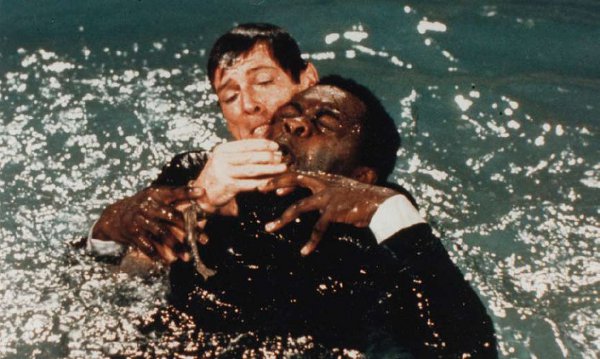
Maybe a spoonful of sugar would have persuaded Mr Big (Yaphet Kotto) to swallow this deadly pill?
Yaphet Kotto was cast as Kananga/Mr Big, the first (and to date only) African American villain in a 007 adventure.
GOLDEN MOMENTS
For my second outing, my old pal – and Ian Fleming’s cousin, as it happened – Christopher Lee was cast as my opponent, Francisco Scaramanga, aka The Man With The Golden Gun. Christopher and I had worked together on a film called Trottie True right back in 1949 when I was starting out, and then again in an episode of the TV series Ivanhoe in the 1950s.
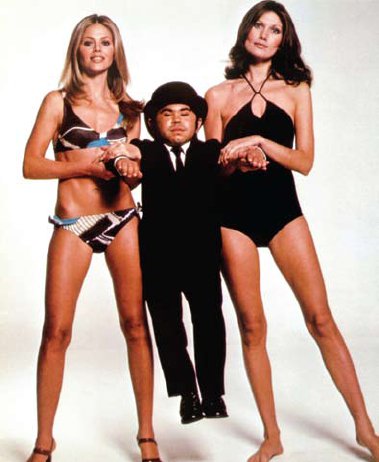
Nick Nack (Hervé Villechaize) was the diminutive hired help of Scaramanga, and as this photo indicates, he was quite a ladies’ man.
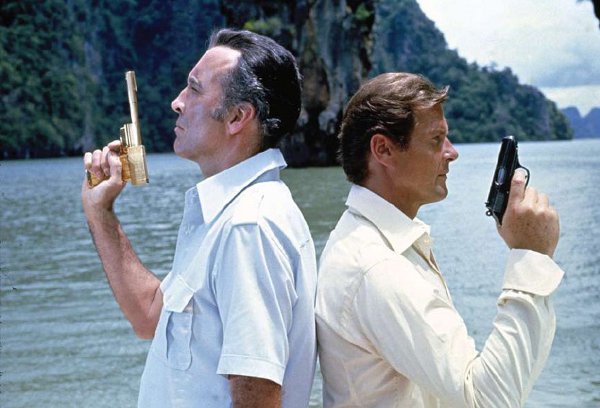
In The Man With The Golden Gun I faced up to my old friend Christopher Lee.
On The Man With The Golden Gun I used to tease Christopher mercilessly about his role as Dracula and, just before the director called ‘Action’, I would lean over and say, ‘Go on, Chris, make your eyes go red!’
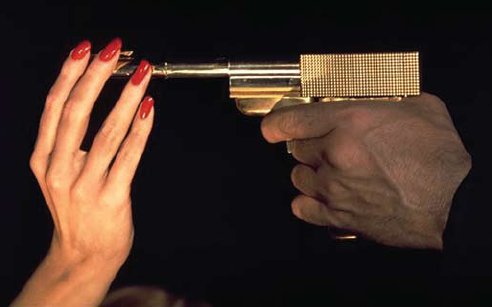
A rather provocative poster image for the film, featuring Christopher Lee’s hand.
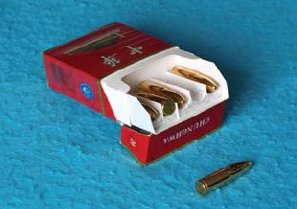
Remember the bullet with 007 on that arrived in M’s office? Well, it was a custom-made, 4.2-millimetre, golden (23-carat gold with traces of nickel) dum-dum bullet.
Then there was the time we first entered the mouth of the cave on James Bond Island, which was replicated back at Pinewood as Scaramanga’s HQ. A mass of bats flew out towards us. Without flinching, Christopher held up his hand and said, ‘Not now, Stanislav!’
He looked sheepishly at me and said, ‘You’re going to use that against me, aren’t you?’
Me? As if!
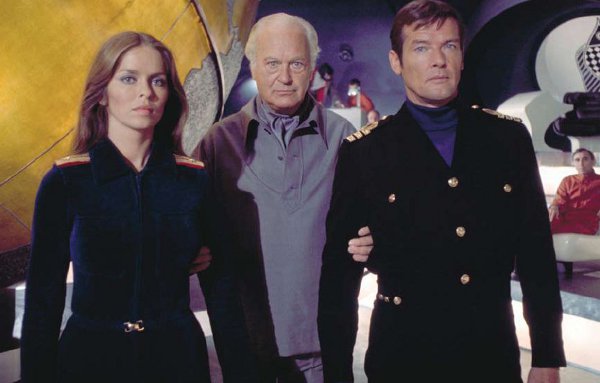
Karl Stromberg (as played by Curt Jurgens) in The Spy Who Loved Me, one of my more charismatic adversaries. Note the vice-like grip in which he holds both me and Barbara Bach-to-Front.
Scaramanga is assisted by the diminutive Nick Nack, as played by Hervé Villechaize. Dear Hervé was a fun character – and sex mad! I asked him how many girls he’d had while we were shooting in Hong Kong.
‘Forty-five,’ he replied in his squeaky French voice.
‘Ah!’ I said. ‘But it doesn’t count if you paid them.’
‘Even when I offer to pay sometimes they refuse me,’ he added sadly.
He trotted up to Maud Adams in the lobby of the Peninsula Hotel in Hong Kong one morning, tugged on her knee-length skirt and looked up to say, ‘Maud, tonight I am going to creep into your room, climb under the duvet and make mad passionate love to you.’
Unfazed, Maud replied, ‘If I find out you have, I’ll be very cross.’
Poor Hervé.
Karl Stromberg was very nearly a member of SPECTRE, as I mentioned earlier. However, his bizarre undersea ideology was enough to make him a stand-alone villain, especially with his quirky webbed fingers. Curt Jurgens played Stromberg, and we became great friends. He introduced me to Gstaad, and when I realized I’d have to find a home outside of the crippling UK tax regime, he offered my family and me his chalet in the Swiss resort to see if we’d like the town. We did, and moved there.
THE TALLER THEY COME …
Every good villain has a good henchman, of course. The most memorable of all has to be Jaws, as played by my good friend Richard Kiel.
Richard, who stands seven foot two and a half inches tall, was cast after script supervisor June ‘Randy’ Randall saw him in an episode of the US TV series Barbary Coast. She knew the team was looking for a very tall actor – and they didn’t come much taller than Richard.
When we filmed the scenes among the ruined Karnak temples in Egypt, Lewis Gilbert told Richard that for one shot he needed to be up in the scaffolding, high above Jimmy Bond. Richard went pale, and said he suffered with vertigo. ‘Hey, I don’t even like being this tall!’ he exclaimed.
Faced with what seemed an insurmountable problem, my stunt double, Martin Grace, said he’d impersonate Richard, and used pieces of orange peel wrapped in tin foil for Jaws’ ‘metal’ teeth. As it turned out, Martin mimicked Richard’s every move so well that when Richard’s mother saw it she asked him how on earth – with his fear of heights – he managed to film that sequence. She wouldn’t believe it wasn’t him.
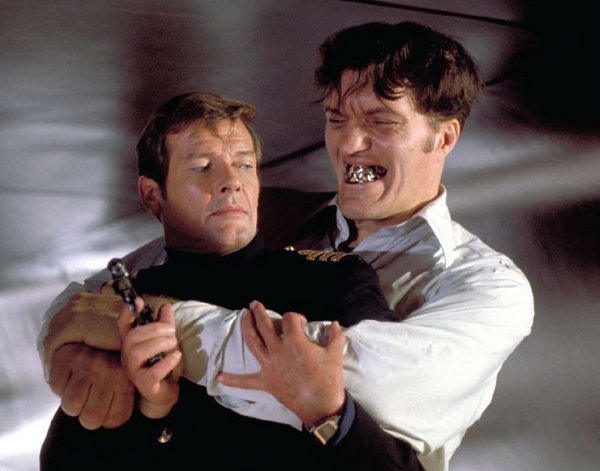
Richard Kiel as Jaws was voted the best Bond villain in a recent poll.
Of course, Jaws got his name from the ominous, glinting steel teeth he wore. Poor devil, they were so uncomfortable to wear – Richard could only keep them in for about half a minute at a time. The comical expressions he had to convey were quite the opposite of what he was feeling, with an overwhelming urge to gag!
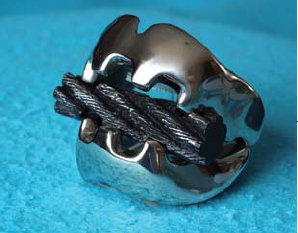
His teeth could munch through solid cables – if he’d had his Weetabix.
Jaws’ popularity stemmed from the humour Richard injected into the character, and we all agreed he made a superb villain. In the script, he died at the end of The Spy Who Loved Me; however, Cubby felt it could be worth saving him, and the scene was re-written. Jaws didn’t drown, but popped up in the ocean and started swimming. That raised a round of applause at the premiere – especially from the youngsters.
He did of course return, in Moonraker, as did Hervé Villechaize … for a set visit. Our unit publicist thought he’d spotted a photo opportunity and asked if they’d pose together, as ‘little and large’ villains. Richard quite rightly said, ‘I don’t do freak photos.’
TO SPACE AND BEYOND!
Moonraker was filmed in Paris as an Anglo-French co-production under the 1965–79 film treaty. France had much more favourable taxation laws for the creative industries, and that was a great lure to Cubby in setting up the film there, but part of their qualifying criteria was that the lead villain had to be French. Hugo Drax was going to be played by James Mason, who coincidentally I worked with later that year in North Sea Hijack; I admired him greatly and thought it terrific casting. However, because of the qualifying criteria, bilingual Frenchman Michael Lonsdale was accordingly offered the part, and made a wonderfully underplayed yet menacing Drax. He became the first Bond villain to take a giant step for mankind, and perished in space.
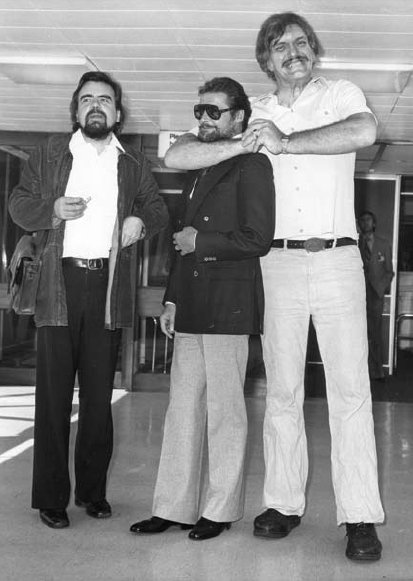
Arriving on the Moonraker publicity trail – me and my two mates, Michael Lonsdale and Richard Kiel.
Of course, once you’ve been to space, there isn’t a lot further you can go with a Bond villain, and so it was decided to bring the next film, For Your Eyes Only, and its protagonists back to earth. The only problem, for Jim, is that he couldn’t really be sure who the bad guy was: Kristatos (Julian Glover) or Columbo (Topol)?
It really is a much more grounded story, with the villains being the good old, dependable Russians – keen to get their hands on the British ATAC device. The Soviets were at it again in Octopussy, too. Crazed General Orlov (Steven Berkoff) thought he could make the West disarm by setting off a nuclear device inside an American airbase in West Germany. He and Kamal Khan (Louis Jourdan) used the Octopussy Circus as a front for their dastardly plans.
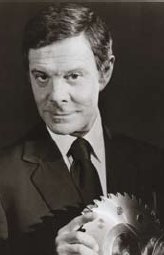
Louis Jourdan was Kamal Khan in Octopussy.
By the time of my swansong, A View To A Kill, technology was becoming the world’s major boom industry, and accordingly became the subject for our original screenplay. Our villain, Max Zorin, played by Christopher Walken, was the product of nasty Nazi medical experimentation during World War II, in which pregnant women were injected with massive quantities of steroids in an attempt to create ‘super-children’. Most of the pregnancies failed, but the few that did survive went on to become extraordinarily intelligent individuals – but with a taste for world domination and more than a streak of ruthlessness.
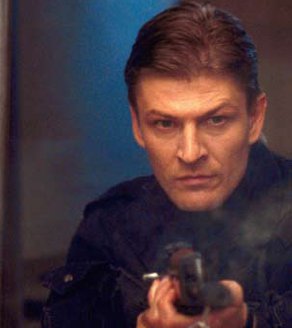
Sean Bean played Alec Trevelyan in GoldenEye.
My only sadness with this film was the sheer amount of violence, gunfire and explosions, killing scores of innocent Zorin employees in the finale. It seemed a little over the top in my mind, and not quite in the Bond tradition.
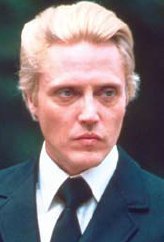
Christopher Walken as Max Zorin in A View To A Kill.
With détente and a warming Cold War, the Russians obviously couldn’t be Bond’s enemy for much longer, but in The Living Daylights General Koskov, played by Dutch actor Jeroen Krabbé, played on the thawing relations to draw Britain into a double-crossing plot, which would help him eliminate the head of the KGB and leave the way clear to take over.
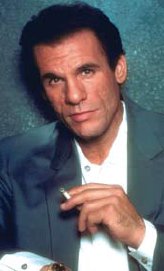
Robert Davi played drug baron Franz Sanchez in Licence To Kill.
A complete change of tone was ushered in with Franz Sanchez in Licence To Kill: he ran a drug cartel from South America to Asia. Played by Robert Davi, Sanchez had an interesting choice of pet in a large green iguana that wore a rather fetching diamond collar. I found the iguana quite diverting, but the story was one of personal revenge for the murder of Felix Leiter’s new wife, Della, and, for me, it became far too dark in style and content.
It was interesting, therefore, to see that the next Bond villain – in GoldenEye in 1995 – was intent on taking over control of the aforenamed satellite and using it for personal profit – back to the good old baddies! Formerly known as ‘Agent 006’, Alex Trevelyan, played by Sean Bean, was a contemporary of Jim’s from MI6. Apparently, Sean Bean had been considered for the role of Jimbo at one point, but became a baddie instead. That’s what happens, you see.
Of course, many Bond villains are modelled on real people, or should I say real circumstances in which they could exist.
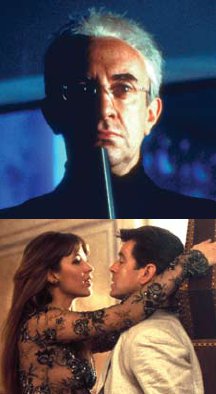
 Take Elliott Carver (Jonathan Pryce, above right) in Tomorrow Never Dies: a global media magnate who wanted to expand his empire by any means, and in particular into China. Who does that remind you of?
Take Elliott Carver (Jonathan Pryce, above right) in Tomorrow Never Dies: a global media magnate who wanted to expand his empire by any means, and in particular into China. Who does that remind you of?
 Oil is a massive player in the world energy stakes. Control the pipelines, you control the wealth. Elektra King (Sophie Marceau, right) thought it acceptable to destroy Istanbul and thus control the Bosphorus oil supplies in The World Is Not Enough. That’s not nice.
Oil is a massive player in the world energy stakes. Control the pipelines, you control the wealth. Elektra King (Sophie Marceau, right) thought it acceptable to destroy Istanbul and thus control the Bosphorus oil supplies in The World Is Not Enough. That’s not nice.
 Satellites orbit our earth, and control all manner of things. Control one of them with a powerful death ray attached, and the world would be in trouble – as Gustav Graves (Toby Stephens, right) realized in Die Another Day.
Satellites orbit our earth, and control all manner of things. Control one of them with a powerful death ray attached, and the world would be in trouble – as Gustav Graves (Toby Stephens, right) realized in Die Another Day.
 But who finances the crooks and their schemes? One such person is LeChiffre, the terrorists’ banker. Only thing is, he needed to turn a profit on investments left in his care, and made unwise decisions. He had to win it back in a high-stakes poker game to prevent the mysterious head of Quantum, Mr White (Jesper Christensen, right), from becoming upset in Casino Royale.
But who finances the crooks and their schemes? One such person is LeChiffre, the terrorists’ banker. Only thing is, he needed to turn a profit on investments left in his care, and made unwise decisions. He had to win it back in a high-stakes poker game to prevent the mysterious head of Quantum, Mr White (Jesper Christensen, right), from becoming upset in Casino Royale.
 Mr White and Quantum are also behind Dominic Greene’s (Mathieu Amalric, right) attempts to control water in Bolivia – or at least I think that was the plot – in Quantum Of Solace. Mr Greene didn’t survive, but Mr White is still out there. I just hope I don’t bump into him!
Mr White and Quantum are also behind Dominic Greene’s (Mathieu Amalric, right) attempts to control water in Bolivia – or at least I think that was the plot – in Quantum Of Solace. Mr Greene didn’t survive, but Mr White is still out there. I just hope I don’t bump into him!
